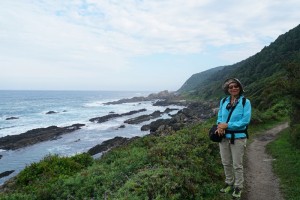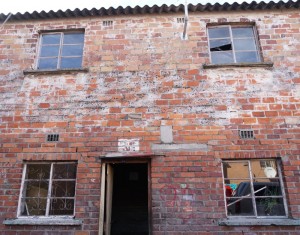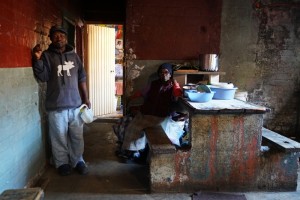20-day Trip: Part 1 – Cape Town, Stellenbosch, Oudtshoorn, Garden Route – Addo Elephant National Park May 6 – 12
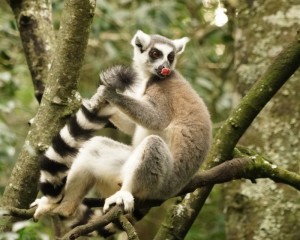 |
20-day South African Explorer Tour May 6-25
I like travel by road, train and boat which is a more leisure way to appreciate an expansive place and soak in the atmosphere. After some research, I find a 20-day camping/accommodation tour with Nomad Africa Tours from Cape Town to Johannesburg traversing Lesotho and Swaziland. (Actually the journey is sub-divided into three short trips).
I like camping but cannot sleep well. Hence, I decide to go for accommodation (R23,950 instead of R17,950). Unlike other companies running similar trips, Nomad Africa Tours does not offer sharing for individual travellers: single traveller choosing ‘accommodation’ on this tour has to pay a supplement of R3,190. This brings the basic tour cost to R27,140. I also brought an activity package for R2,610 which includes a cultural Cape Town tour, cheese and wine tasting, a basic tour to Cango Caves, Hluhluwe game drive, St Lucia boat cruise and a game drive in Kruger National Park.
Our truck is called ‘Marvin‘. Our guide is Mathew (Mat), a 27-year-old outgoing guy and our driver is Ben. Unlike my previous journeys with Dragoman, I do not need to cook or do any shopping this time. Tania is the chef and we only help with food preparation such as washing and chopping and cleansing after a meal.
The first section is from Cape Town to Port Elisabeth/Addo Elephant Park with a total of 12 passengers. Samantha (Sam) comes from the UK, Michelle from the Netherlands, Birgit and Daniel, Anja and Dirt, Martin, Ute and Anke from Germany and Otto and Sigrid from Australia. The age ranges from 70+ to 20 and I am the third oldest. The five 50+ participants all go for accommodation. All except Sam, Michelle, Anke and Ute travel all the way to Johannesburg.
Day 1 (May 6): Cape Town – Stellenbosch
My journey began at 8am at the office of Nomad Africa Tours on Castle Street. After going through the paper works, we set off on a ‘Cultural Cape Town Tour’. Our first stop was the infamous District Six which landscape today is a scar and reminder of the horrible apartheid policy introduced in the 1980s. Some 60,000 residents in this vibrant and culturally mixed district had to be relocated to poor townships in Cape Flat. We spent half an hour in the museum which is located in a former church building looking at old photos of the area, read the oral history of residents and reflect on their pains and sad experience.
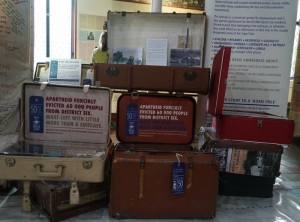 |
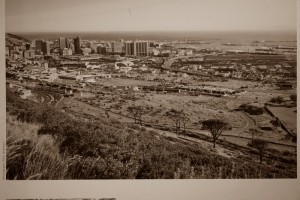 |
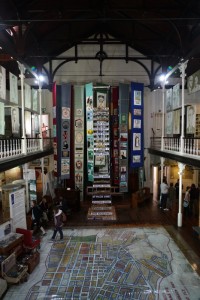 |
Then we went to Langa one of the oldest townships in the area. We met a young local guy who took us around. Unemployment rate is high and living conditions are generally poor. We were taken to a red-brick building with six rooms which houses as many as 12-15 families. First built as a male dormitory, each room is now shared by two or three couples. There is only one toilet. Their children are sleeping in the common area/kitchen. The odour is awful.
In response to my question, a lady said that she first moved in with her father in 1983. Today she is living in the same place with her two children. She does not like the couple sharing her room. How terrible!
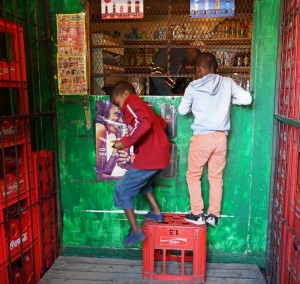 |
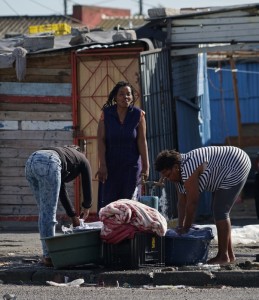 |
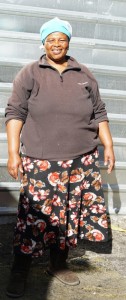 |
We drove through two more township at Khayelitsha and Gugulethu both of which are filled with flimsy tin-shads without basic infrastructure. Residents normally have to carry water in a container to their dwelling and use communal toilets. But according to our guide, the government promised to build 20 million public houses for the poor in early 1990s. But only 4 million houses have been built so far/ The allocation system is problematic: people bribe to get a house which is often rented out later.
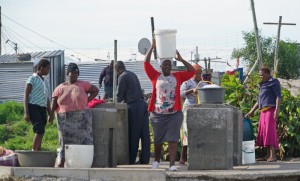 |
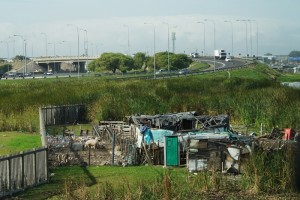 |
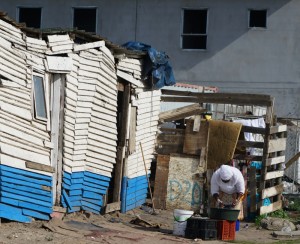 |
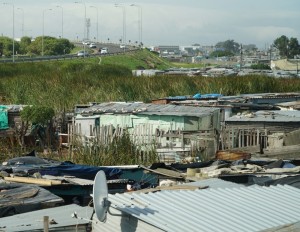 |
 We returned to Castle Street after midday and set off with Mat, Ben and Tania. We had wine and cheese tasting at Goatshed: I had six glasses of wine which were all paired with a different cheese. I enjoyed the wine so much that I brought a special pack of six bottles for R477 and three types of cheese for less than R100. We had a late lunch at the cafe.
We returned to Castle Street after midday and set off with Mat, Ben and Tania. We had wine and cheese tasting at Goatshed: I had six glasses of wine which were all paired with a different cheese. I enjoyed the wine so much that I brought a special pack of six bottles for R477 and three types of cheese for less than R100. We had a late lunch at the cafe.
We drove to Stellenbosch, the second oldest settlement in the Western Cape Province after Cape Town and the heart of the wine routes. The town was known as the City of Oaks due to the large number of oak trees planted by its founder Simon van der Stel. Surrounded by mountains, Stellenbosch is green and picturesque with many traditional Dutch architecture. Mat took us to a shop which sells many things that are not found elsewhere: I felt like travelling in a time tunnel!
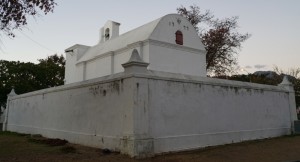 |
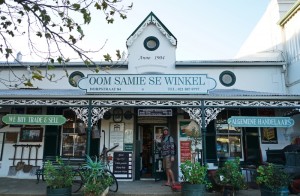 |
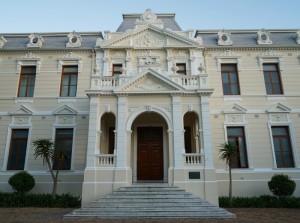 |
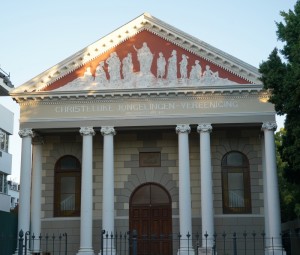 |
Our hotel NH Lord Charles Hotel (named after the biggest landlord Lord Charles Somerset) is about 30-minute drive from Stellenbosch. We arrived at the hotel after 6pm. I was tired with a full stomach and decided not to join the group for dinner in Stellenbosch.
Day 2 (May 7): Route 52 – Oudtshoorn
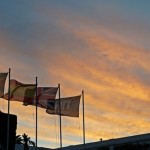 For most of the days, we had to get up early for breakfast between 6:30 and 7am. Today, we set off just before 8am. The landscape changes: from the winery area to a dry region before crossing the scenic Tradouw Pass built by Thomas Bain between 1869 and1873. We crossed so many vegetation zones in a day!
For most of the days, we had to get up early for breakfast between 6:30 and 7am. Today, we set off just before 8am. The landscape changes: from the winery area to a dry region before crossing the scenic Tradouw Pass built by Thomas Bain between 1869 and1873. We crossed so many vegetation zones in a day!
We travelled along the famous Route 62 towards Oudshoorn capital of ostrich. On the way we stopped at Ronnie’s sex shop, an ordinary eatery which by adopting a sexy name succeeds in attracting people to stop for a look and drink. We had our first picnic lunch with cheese, lettuce, tomatoes, cucumber and bread.
It was almost 4pm when we had a guided tour in an ostrich farm. I was picked to try a neck massage by an ostrich and an ostrich ride. I screamed when the ostrich started to run worrying that I might be thrown off its back. On reflection, it’s fun!
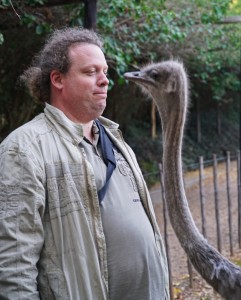 |
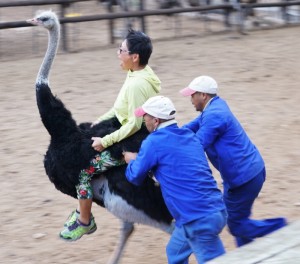 |
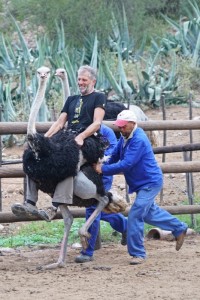 |
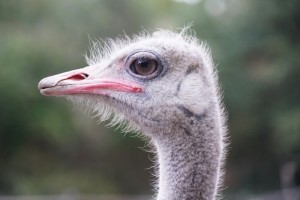 |
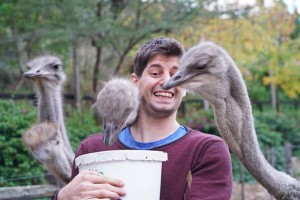 |
We spent a night in a resort near the farm. I had a large room with four beds!
Day 3 (May 8 Sunday): Heart of Garden Route: Oudtshoorn – Plettenberg Bay
At 9am, we had an hour guided tour in the Cango Caves, some 15km from Oudtshoorn. I have seen many impressive caves and do not find Cango Caves exceptional. Perhaps, if I were taken onto the adventurous instead of the tourist route, I might have come to a different conclusion.
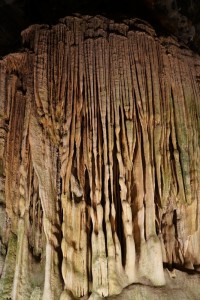 |
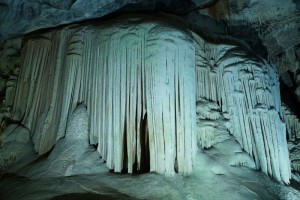 |
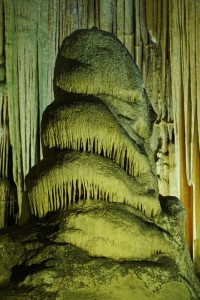 |
Today’s highlight was a drive along the scenic Garden Route, a stretch of the south-eastern coast of South Africa that extends from Mossel Bay in the Western Cape to the Storms River in the Eastern Cape. We crossed the Outenique Mountains passing through George, the administrative centre of the area before hitting the Garden Route, which name comes from the verdant and ecologically diverse vegetation and beautiful scenery along the coast. There are ten nature reserves embracing a variety of ecosystems and many bays along the route that are nurseries to the endangered Southern Right Whales which go there to calve in the winter and spring (July to December).
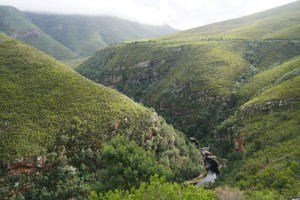 |
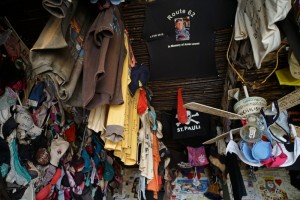 |
We drove through Wilderness, a popular retirement area before arriving at Knysna which I find too touristic. This area is famous for oysters and I had four large coastal oysters (R28 each) and a cultured one (R18). The best part of the day was when Mat took us on a short walk to the headland to look at the beautiful bay.
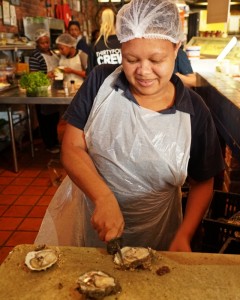 |
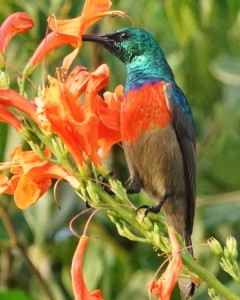 |
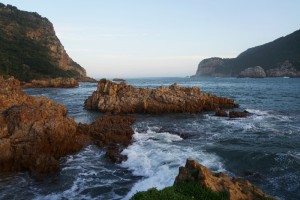 |
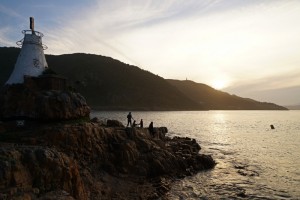 |
It was dark when we reached the Dunes Hotel in Plettenberg Bay. I had a lovely room. It’s Daniel’s birthday and we celebrated the occasion in the hotel restaurant. I shared a starter with Sam and had the catch of the day and a glass of white wine for only R170. Great value for money!
Day 4 (May 9 Monday): Plettenberg Bay – Storms River Village
After a delicious cooked breakfast with eggs, bacon and toast in the hotel, Anke, Daniel, Birgit, Martin and I rushed off at 8:30am for a packed morning activity. We brought a combo ticket for R400 for a visit to the Garden of Eden (a bird aviary), two sanctuaries for monkeys and big cats.
We spent over an hour in the aviary strolling leisurely along the board-walk. I was able to see at close range a dozen of birds including sunbird, parrot, parakeet, turaco (Go-away Bird), gold pheasant, pigeon, Cape- Turtle- Dove, blue crane, grey crowned crane, ibis, flamingo, spur fowl, guinea fowl and many types of waterfowl (to name a few). I can easily spend a few hours here.
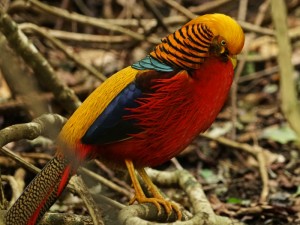 |
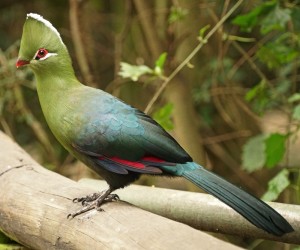 |
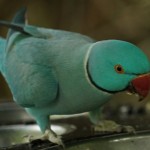 |
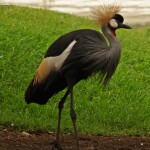 |
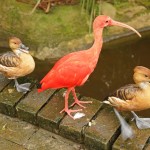 |
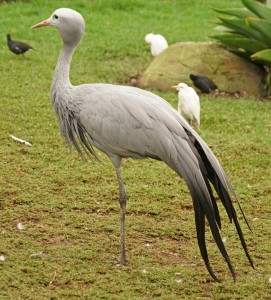 |
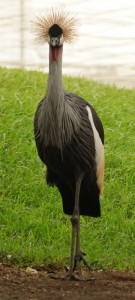 |
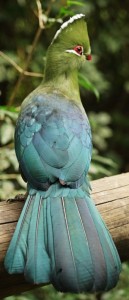 |
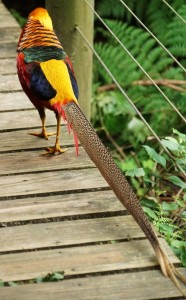 |
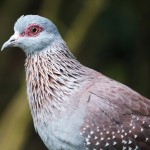 |
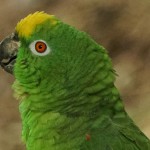 |
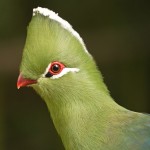 |
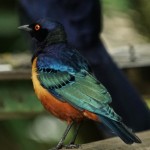 |
The monkey sanctuary is located next to the aviary. We were joined by a dozen visitors on a guided tour for an hour. All the monkeys here come from zoos or have been rescued. I saw lemur from Madagascar for the first time, the South African blue monkey, spider monkey and howler monkey. I was amused by two monkeys with golden colour hair from Thailand: they walk upright like humans.
The cat sanctuary has over 75 cats including 10 lions and six tigers. I saw three jaguars and a puma for the first time. There is no trace of the lonesome leopard. It is depressing to watch these big cats kept behind the fence. However, they would not survive if released back to nature.
After lunch, we made our way to the famous Bloukrans Bridge, home to the world’s highest bungee jump at 216m. A jump is believably cheap (only R850 for the first jump and R600 for the second one). I am afraid a jump would hurt my fragile bones and see no point in taking a risk at my age. It is equally thrilling to watch Sam and Michelle jump. A few crazy guys got wild and took a second jump.
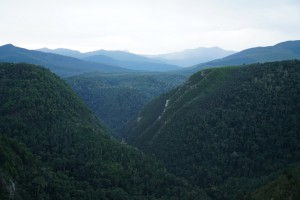 |
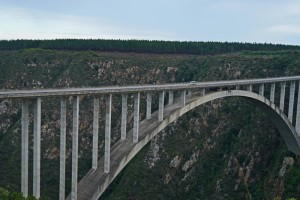 |
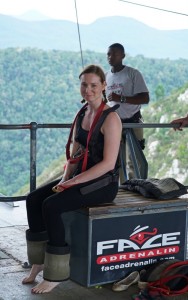 |
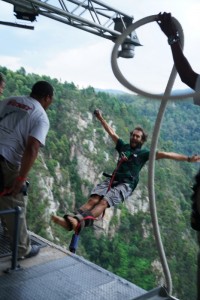 |
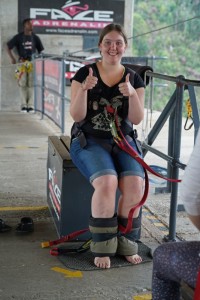 |
Mat dropped the accommodation group at Tsitsikamma Inn in the Storms River Village around 5pm. I had a nice and cozy room and enjoyed a pre-dinner drink with Otto, Sigrid, Anke and Ute.
The campers stayed in a camp site about 500m from our hotel. We walked to the camp site and had a chicken stew for dinner. The elderly group retired to the hotel shortly after 8pm: I had a wonderful sleep.
Day 5 (May 10 Tuesday): Tsitsikamma National Park
We had breakfast at 7am and headed to the Tsitsikamma National Park at 8am. The park is considered South Africa’s best kept secret as it has exceptional beautiful hiking trails and superb coastal scenery. Situated at the heart of the picturesque the Garden Route, it forms a section of the Garden Route National Park. Tsitsikamma is a Khoisan (early inhabitants of the area) word meaning “place of much water”. Many species of forest, fynbos (Cape Floral Kingdom) covering approximately 30% of the park and sea birds are present. We followed Mat and enjoyed a short 2-km coastal hike to see two suspension bridges (the River Mouth and Stormsriver Mouth Bridge).
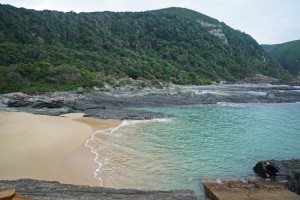 |
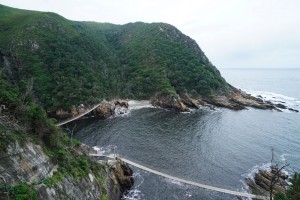 |
At 10am, nine out of 12 members joined Mat on the 6.4-km hike to a waterfall along the coast which is part of the famous Otter Hike. The trail is well marked with a yellow footprint. The path despite the boulders and several steep sections, is not too slippery and difficult. Ute and Otto later gave up and seven of us completed the hike by 2 pm. Though Michelle had fallen into a hole between rocks, she survived without serious injury.
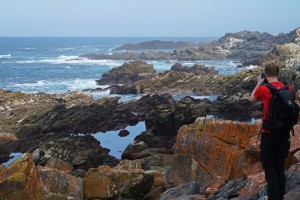 |
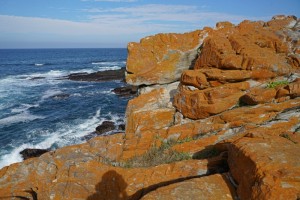 |
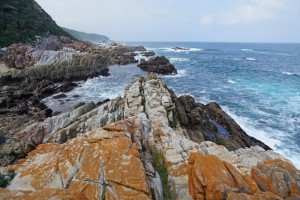 |
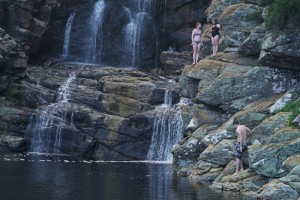 |
Ute and Anke were most energetic and took a canopy walk in the late afternoon. I spent the afternoon leisurely in my comfortable room writing my travel notes.
Day 6 (May 11 Wednesday): Storms River Village – Addo Elephant National Park
We continued our journey through the Eastern Cape towards the Addo Elephant National Park, the third largest national park in South Africa. It has been expanded over the years to conserve a wide range of biodiversity, landscapes, fauna and flora. It now covers an area of about 180,000 hectares stretching from the semi-arid karoo area in the north around Darlington Dam, over the rugged Zuurberg Mountains, through the Sundays River Valley and south to the coast between Sundays River mouth and Bushman’s river mouth.
Established in 1931 when the elephant population dwindled to only 11, the park is now a sanctuary to over 650 elephants, lion, buffalo, black rhino, spotted hyena, leopard, a variety of antelope and zebra species as well as the unique Addo flightless dung beetle. Southern Right Whale and Great White Shark are found in the Algoa Bay Coast.
We had a pleasant game drive in the afternoon. Soon after entering the park, we saw several groups of elephants. The largest group had about ten elephants of all ages including a tiny baby elephant which is always surrounded and protected by other elephants.
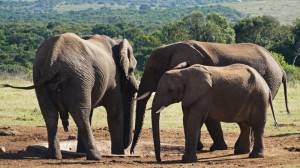 |
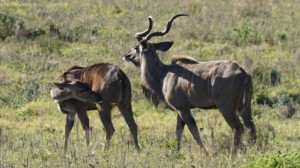 |
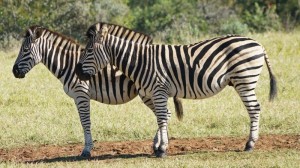 |
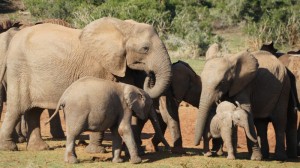 |
After a late lunch at the Jack Point, we continued our drive till 5pm. We were lucky and saw possibly 60 elephants, countless warthogs, dozens of buffaloes and zebras. We also saw half a dozen of mongoose and a meerkat.
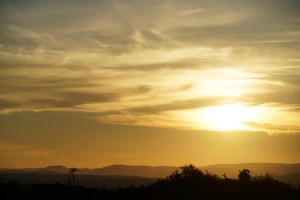 We watched a beautiful sunset on our way to the Kudu Ridge Lodge a private game lodge. For the accommodation group, we all had a large en-suite tent-room with four beds. According to the owner, the rate is R650 pp including breakfast. I returned to my tent after dinner while others had a fun time drinking at the bar to bid farewell to Michelle who would be leaving us the following day.
We watched a beautiful sunset on our way to the Kudu Ridge Lodge a private game lodge. For the accommodation group, we all had a large en-suite tent-room with four beds. According to the owner, the rate is R650 pp including breakfast. I returned to my tent after dinner while others had a fun time drinking at the bar to bid farewell to Michelle who would be leaving us the following day.
Day 7 (May 12 Thursday): Rest
It’s a lazy (or leisure) day marking the end of the first part of the 20-day trip. Tania cooked us a full breakfast with bacon, egg and toast. Then Anke and I took a short walk near the lodge which covers an area of 280 hectares. We saw a few antelopes.
After lunch, Mat returned with four new members: Cat and Genie from Canada, Jackie from USA and Felix from Switzerland. The group’s size grew to 15. I continued with my writing which was interrupted only by the sundown drink party without a proper sunset owing to an overcast sky. I was relieved when I finally uploaded the notes on my visit to Cape Town before going to bed at 9pm.
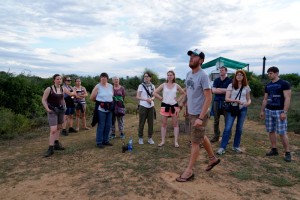 |
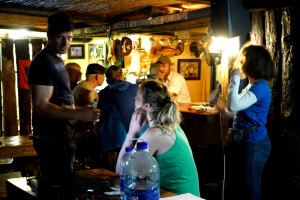 |


